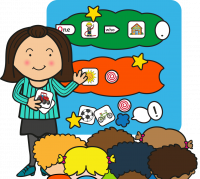Engaging Neurodivergent KS1 Children in the Classroom
Engaging Neurodivergent KS1 Children in the Classroom
Neurodivergent children, including those with ADHD and autism, often have different learning styles and may struggle to fully engage with traditional teaching methods. However, with a few adjustments and targeted strategies, we can create an inclusive and engaging learning environment for all pupils.
In this blog post, we will share some practical ideas on how to engage neurodivergent children in Key Stage One literacy lessons.
Understanding ADHD and Autism
Before we delve into the strategies, it is important to have a basic understanding of ADHD and autism.
Attention Deficit Hyperactivity Disorder (ADHD) is a neurodevelopmental disorder characterized by difficulties in paying attention, impulsive behaviour, and hyperactivity. Autism, on the other hand, is a developmental disorder that affects social interaction, communication, and behaviour.
Both ADHD and autism can affect a child's ability to focus, comprehend instructions, and engage with their peers. It is crucial to approach neurodivergent children with empathy and tailor our teaching methods to suit their needs.
Engaging Neurodivergent Children in the Classroom - Literacy
1. Provide Visual Supports: Use visual aids, such as posters, charts, and diagrams, to present information in a clear and structured manner. Visual supports can help neurodivergent children better understand concepts and organise their thoughts.
For example, use visual schedules to outline the daily literacy activities, supply visual cues for classroom routines, or use fun imagery as task prompts.
2. Incorporate Multisensory Techniques: Neurodivergent children often benefit from multisensory learning experiences. Include activities that involve tactile, auditory, and visual stimuli. For instance, use textured materials for letter formation practice, incorporate music or sound effects during reading activities, and encourage pupils to create visual representations of stories they have read. 
3. Break Tasks into Smaller Steps: Breaking tasks into manageable steps can help neurodivergent children feel less overwhelmed and enable them to focus better. When introducing a new literacy concept, supply step-by-step instructions and offer support as needed. Use visual cues and verbal prompts to guide them through each step of the task.
 4. Provide Clear Instructions: Neurodivergent children may struggle with processing verbal instructions.
4. Provide Clear Instructions: Neurodivergent children may struggle with processing verbal instructions.
To ensure comprehension, provide clear, concise, and specific instructions.
Use visual aids or written instructions alongside verbal explanations. Breaking instructions into bullet points or using numbered lists can also help them better understand and remember the task at hand.
5. Allow for Movement Breaks: Children with ADHD and autism often have difficulty sitting still for extended periods. Incorporate movement breaks into your literacy lessons to help them release excess energy and support focus.
These breaks can be as simple as stretching exercises, dancing to a song related to the lesson, or taking a short walk outside the classroom.
6. Use Technology: Technology can be a powerful tool to engage neurodivergent children. Incorporate educational apps, interactive websites, or digital storytelling platforms into your literacy lessons.
These tools can provide a more interactive and engaging learning experience, catering to different learning styles.
7. Differentiate Instruction: Neurodivergent children have diverse learning needs.
Differentiated instruction allows you to meet each pupil at their individual level. Provide options for different learning styles and abilities, such as offering audio recordings of texts for auditory learners or providing additional visual support for visual learners.
8. Encourage Peer Collaboration: Collaborative learning can foster social interaction and provide opportunities for neurodivergent children to practice their communication skills. Assign group activities or pair neurodivergent children with neurotypical peers for literacy projects. Ensure that the groups are structured and provide clear guidelines for collaboration.
9. Create a Safe and Supportive Environment: Proving a safe and supportive classroom environment is essential for the success of neurodivergent children. Encourage empathy, respect, and inclusivity among all pupils. Teach social skills explicitly and provide opportunities for neurodivergent children to practice and develop their social skills through role-plays and group discussions.
 10. Celebrate Achievements: Recognize and celebrate the achievements of neurodivergent children. Praise their efforts and progress, no matter how small. Display their work in the classroom to promote a sense of pride and accomplishment. Celebrating achievements can boost their confidence and foster a positive attitude towards literacy.
10. Celebrate Achievements: Recognize and celebrate the achievements of neurodivergent children. Praise their efforts and progress, no matter how small. Display their work in the classroom to promote a sense of pride and accomplishment. Celebrating achievements can boost their confidence and foster a positive attitude towards literacy.
Remember, every child is unique, and what works for one neurodivergent child may not work for another. It is essential to observe and adapt your strategies based on individual needs and preferences.
By implementing these practical ideas, we can create an inclusive and engaging learning environment that supports the literacy development of all neurodivergent children in Key Stage One.
